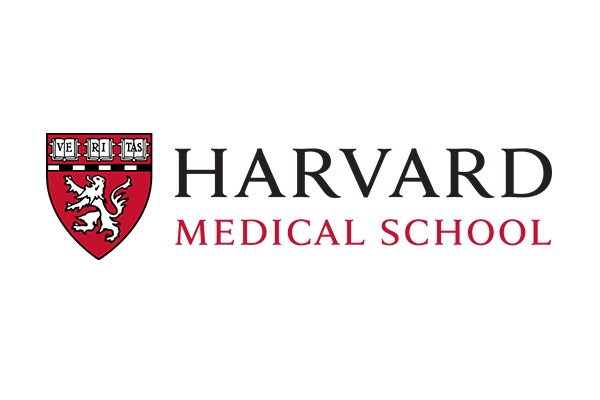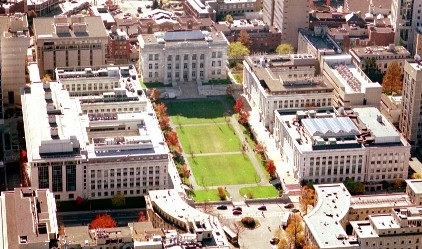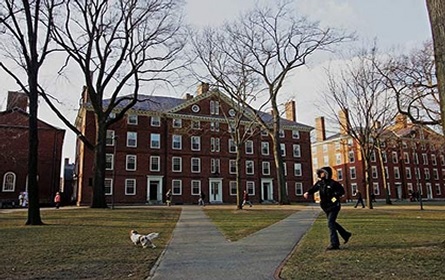From The Harvard Medical School (US)
at
Harvard University (US)
News & Research
December 8, 2021 [Just today in social media.]
RACHEL TOMPA
$20M awarded to groups studying human brain evolution and animal development.

Image: fruttipics/iStock/Getty Images Plus.
Research groups on opposite sides of the country are taking two very different approaches to answer a big question: How did we get here?
One team is working to understand the human brain’s unique evolution. The other aims to uncover how animals grow from one cell to many.
Both teams, large-scale collaborative research groups known as Allen Discovery Centers, have each received $10 million awards to fund the next four-year phases of their work as recommended by the Paul G. Allen Frontiers Group, a division of the Allen Institute (US). The centers were initially launched in 2017, each with $10 million in funding for their first four years of research.
The Allen Discovery Center for Human Brain Evolution, led by investigators at Harvard Medical School and Boston Children’s Hospital, aims to answer an important question about human biology: How did our unique brains evolve? Their work over the past four years has established a huge database of ancient human DNA that has given rise to new insights about not only our biology and evolution, but our cultural and social histories.
The Allen Discovery Center for Cell Lineage Tracing, led by investigators at University of Washington School of Medicine, The California Institute of Technology (US), and The University of Basel [Universität Basel][Université de Bâle](CH), is working to understand how we and other animals grow from one cell to many. Animal development is a highly regulated process with a lot of natural variation—in healthy development, we all end up with the same basic body plan but none of us are carbon copies of each other. Understanding how our genes and environments influence development will also help researchers better understand developmental diseases.
“We developed the Allen Discovery Center funding mechanism in 2016 when the Frontiers Group was launched with the goal of filling a gap left by traditional funding sources and giving visionary scientists the ability to attack a problem in new ways,” said Kathy Richmond, executive vice-president and director of the Frontiers Group and the Office of Science and Technology at the Allen Institute. “We’ve been thrilled with the successes of these two centers in their initial phases, especially the degree to which they’ve engaged their communities and accelerated entire fields of research. We’re so excited about what the next four years will hold.”
How our brains came to be
The human brain evolution team is looking for pieces of the genome that are the same, or conserved, across all mammals except humans. Scientists dub this type of human-specific DNA change a human accelerated region. While many teams have studied human accelerated regions in modern humans, the center’s researchers now plan to examine ancient human DNA to pin down how these regions of the human genome have changed during our evolution, matching genomic changes with key cultural and behavioral changes over the past 10,000 years of human history.
David Reich, a professor of genetics in the Blavatnik Institute at HMS, is leading the effort to collect this ancient DNA. The team receives samples from ancient burial grounds in Europe found by archeologists who collaborate with the genetics researchers. Reich and his colleagues have sequenced and analyzed DNA from several thousand ancient human genomes over the past decade, and in the center’s first four-year phase, built these sequences and other publicly available ancient genome sequences into an open-access ancient human DNA database. In the center’s next phase, the researchers will mine these ancient DNA databases for human accelerated regions likely to be involved in brain evolution and compare them with modern sequences.
They will also characterize how these DNA sequences work, using the genetic engineering technique known as CRISPR-Cas9 to edit human accelerated regions in neurons or brain organoids in the lab to understand the effects on neurons if these regions are deleted or mutated. They are also using ferret and monkey animal models to study how a few select genes, identified in the center’s first phase, affect brain function. Together, these studies will shed light on which genomic changes likely drove our brains’ evolution and which were just along for the ride.
It’s an extensive and coordinated effort to understand human evolution at a scale that’s not typically funded by traditional sources such as the National Institutes of Health, said Christopher Walsh, the HMS Bullard Professor of Pediatrics and Neurology at Boston Children’s. Walsh leads the Allen Discovery Center for Human Brain Evolution along with Reich and Michael Greenberg, the HMS Nathan Marsh Pusey Professor of Neurobiology in the Blavatnik Institute. In the second phase, the center has added three new investigators: Eunjung Lee and Ryan Doan, both HMS assistant professors of pediatrics at Boston Children’s, and Vagheesh Narasimhan, assistant professor at the University of Texas at Austin and a former postdoctoral researcher at HMS.
“These issues of human evolution that we want to understand, and their intersection with human culture and our cognitive features, are fascinating and broadly relevant—but very difficult to support with NIH funding,” Walsh said.
“It’s really transformative to have private funding,” Reich said. “It fills an important gap that would not be supported by normal funding mechanisms.”
Our complex cellular histories
In the Center for Cell Lineage Tracing’s first phase, the team developed several cutting-edge techniques to speed progress in mapping developmental biology. In the next phase, they will apply these technologies to map cell-by-cell development in two model animals, mice and zebrafish, with the goal of understanding how a single fertilized egg develops into the specialized cells that build an entire animal’s body. The scientists will also disrupt genes and perturb the environment to understand how our genes and surroundings affect development.
The scientists want to understand the lineage of each cell’s ancestry during development, as well as the molecular, genetic, and environmental processes that drive each cell’s developmental pathway and how these all come together to form a working body. Thus, the team is not just uncovering a cellular family tree; they’re revealing all the decorations on that tree.
“Those decorations consist of not just knowing the relationships between cells but knowing as much as we can about the cells at each moment in development,” said Jay Shendure, a professor of genomics at UW Medicine. “That includes what genes are being expressed, what their chromatin landscape looks like, what signals they’re generating, how they’re communicating with their neighbors. That fully decorated map is something that is increasingly within grasp.”
Shendure directs the Allen Discovery Center for Cell Lineage Tracing along with Michael Elowitz, a professor of biology and bioengineering at Caltech, and Alex Schier, a professor of cell biology at the University of Basel. The center has also added two new investigators: Kelley Harris, an assistant professor of genome sciences at UW Medicine, and Magda Zernicka-Goetz, the Bren Professor of Biology and Biological Engineering at Caltech.
Along with the research freedom the funding offers, the scientific community the center has brought together has opened new doors for the researchers, Elowitz said.
“We’re all part of a global community of developmental biologists, and we all collaborate outside the center as well. But having this intentional community to focus on a particular style of thinking about development has been really amazing,” he said. “This has been one of the most empowering and transformative scientific experiences of my career.”
See the full article here .
five-ways-keep-your-child-safe-school-shootings
Please help promote STEM in your local schools.
The The Harvard Medical School (US) community is dedicated to excellence and leadership in medicine, education, research and clinical care. To achieve our highest aspirations, and to ensure the success of all members of our community, we value and promote common ideals that center on collaboration and service, diversity, respect, integrity and accountability, lifelong learning, and wellness and balance. To be a citizen of this community means embracing a collegial spirit that fosters inclusion and promotes achievement.
Harvard University (US) is the oldest institution of higher education in the United States, established in 1636 by vote of the Great and General Court of the Massachusetts Bay Colony. It was named after the College’s first benefactor, the young minister John Harvard of Charlestown, who upon his death in 1638 left his library and half his estate to the institution. A statue of John Harvard stands today in front of University Hall in Harvard Yard, and is perhaps the University’s bestknown landmark.
Harvard University (US) has 12 degree-granting Schools in addition to the Radcliffe Institute for Advanced Study. The University has grown from nine students with a single master to an enrollment of more than 20,000 degree candidates including undergraduate, graduate, and professional students. There are more than 360,000 living alumni in the U.S. and over 190 other countries.
The Massachusetts colonial legislature, the General Court, authorized Harvard University (US)’s founding. In its early years, Harvard College primarily trained Congregational and Unitarian clergy, although it has never been formally affiliated with any denomination. Its curriculum and student body were gradually secularized during the 18th century, and by the 19th century, Harvard University (US) had emerged as the central cultural establishment among the Boston elite. Following the American Civil War, President Charles William Eliot’s long tenure (1869–1909) transformed the college and affiliated professional schools into a modern research university; Harvard became a founding member of the Association of American Universities in 1900. James B. Conant led the university through the Great Depression and World War II; he liberalized admissions after the war.
The university is composed of ten academic faculties plus the Radcliffe Institute for Advanced Study. Arts and Sciences offers study in a wide range of academic disciplines for undergraduates and for graduates, while the other faculties offer only graduate degrees, mostly professional. Harvard has three main campuses: the 209-acre (85 ha) Cambridge campus centered on Harvard Yard; an adjoining campus immediately across the Charles River in the Allston neighborhood of Boston; and the medical campus in Boston’s Longwood Medical Area. Harvard University (US)’s endowment is valued at $41.9 billion, making it the largest of any academic institution. Endowment income helps enable the undergraduate college to admit students regardless of financial need and provide generous financial aid with no loans The Harvard Library is the world’s largest academic library system, comprising 79 individual libraries holding about 20.4 million items.
Harvard University (US) has more alumni, faculty, and researchers who have won Nobel Prizes (161) and Fields Medals (18) than any other university in the world and more alumni who have been members of the U.S. Congress, MacArthur Fellows, Rhodes Scholars (375), and Marshall Scholars (255) than any other university in the United States. Its alumni also include eight U.S. presidents and 188 living billionaires, the most of any university. Fourteen Turing Award laureates have been Harvard affiliates. Students and alumni have also won 10 Academy Awards, 48 Pulitzer Prizes, and 108 Olympic medals (46 gold), and they have founded many notable companies.
Colonial
Harvard University (US) was established in 1636 by vote of the Great and General Court of the Massachusetts Bay Colony. In 1638, it acquired British North America’s first known printing press. In 1639, it was named Harvard College after deceased clergyman John Harvard, an alumnus of the University of Cambridge(UK) who had left the school £779 and his library of some 400 volumes. The charter creating the Harvard Corporation was granted in 1650.
A 1643 publication gave the school’s purpose as “to advance learning and perpetuate it to posterity, dreading to leave an illiterate ministry to the churches when our present ministers shall lie in the dust.” It trained many Puritan ministers in its early years and offered a classic curriculum based on the English university model—many leaders in the colony had attended the University of Cambridge—but conformed to the tenets of Puritanism. Harvard University (US) has never affiliated with any particular denomination, though many of its earliest graduates went on to become clergymen in Congregational and Unitarian churches.
Increase Mather served as president from 1681 to 1701. In 1708, John Leverett became the first president who was not also a clergyman, marking a turning of the college away from Puritanism and toward intellectual independence.
19th century
In the 19th century, Enlightenment ideas of reason and free will were widespread among Congregational ministers, putting those ministers and their congregations in tension with more traditionalist, Calvinist parties. When Hollis Professor of Divinity David Tappan died in 1803 and President Joseph Willard died a year later, a struggle broke out over their replacements. Henry Ware was elected to the Hollis chair in 1805, and the liberal Samuel Webber was appointed to the presidency two years later, signaling the shift from the dominance of traditional ideas at Harvard to the dominance of liberal, Arminian ideas.
Charles William Eliot, president 1869–1909, eliminated the favored position of Christianity from the curriculum while opening it to student self-direction. Though Eliot was the crucial figure in the secularization of American higher education, he was motivated not by a desire to secularize education but by Transcendentalist Unitarian convictions influenced by William Ellery Channing and Ralph Waldo Emerson.
20th century
In the 20th century, Harvard University (US)’s reputation grew as a burgeoning endowment and prominent professors expanded the university’s scope. Rapid enrollment growth continued as new graduate schools were begun and the undergraduate college expanded. Radcliffe College, established in 1879 as the female counterpart of Harvard College, became one of the most prominent schools for women in the United States. Harvard University (US) became a founding member of the Association of American Universities in 1900.
The student body in the early decades of the century was predominantly “old-stock, high-status Protestants, especially Episcopalians, Congregationalists, and Presbyterians.” A 1923 proposal by President A. Lawrence Lowell that Jews be limited to 15% of undergraduates was rejected, but Lowell did ban blacks from freshman dormitories.
President James B. Conant reinvigorated creative scholarship to guarantee Harvard University (US)’s preeminence among research institutions. He saw higher education as a vehicle of opportunity for the talented rather than an entitlement for the wealthy, so Conant devised programs to identify, recruit, and support talented youth. In 1943, he asked the faculty to make a definitive statement about what general education ought to be, at the secondary as well as at the college level. The resulting Report, published in 1945, was one of the most influential manifestos in 20th century American education.
Between 1945 and 1960, admissions were opened up to bring in a more diverse group of students. No longer drawing mostly from select New England prep schools, the undergraduate college became accessible to striving middle class students from public schools; many more Jews and Catholics were admitted, but few blacks, Hispanics, or Asians. Throughout the rest of the 20th century, Harvard became more diverse.
Harvard University (US)’s graduate schools began admitting women in small numbers in the late 19th century. During World War II, students at Radcliffe College (which since 1879 had been paying Harvard University (US) professors to repeat their lectures for women) began attending Harvard University (US) classes alongside men. Women were first admitted to the medical school in 1945. Since 1971, Harvard University (US) has controlled essentially all aspects of undergraduate admission, instruction, and housing for Radcliffe women. In 1999, Radcliffe was formally merged into Harvard University (US).
21st century
Drew Gilpin Faust, previously the dean of the Radcliffe Institute for Advanced Study, became Harvard University (US)’s first woman president on July 1, 2007. She was succeeded by Lawrence Bacow on July 1, 2018.




